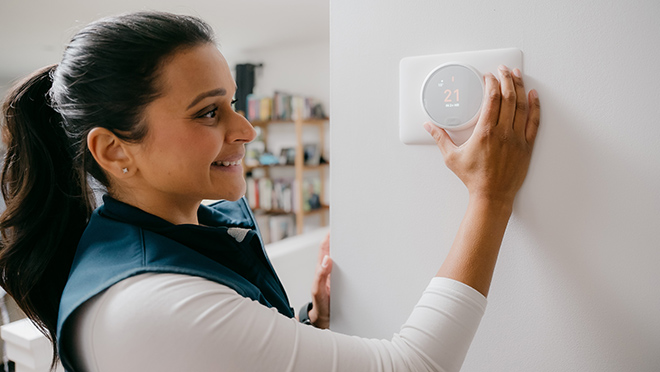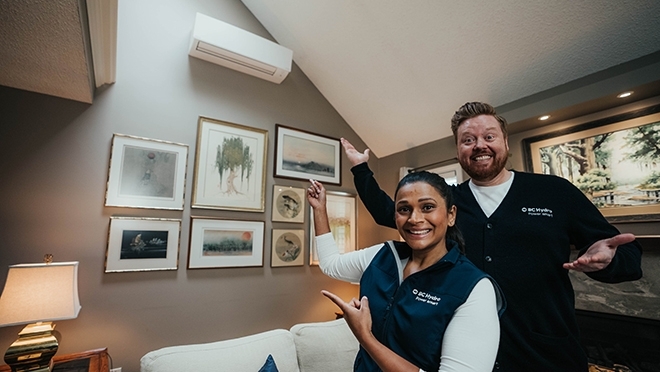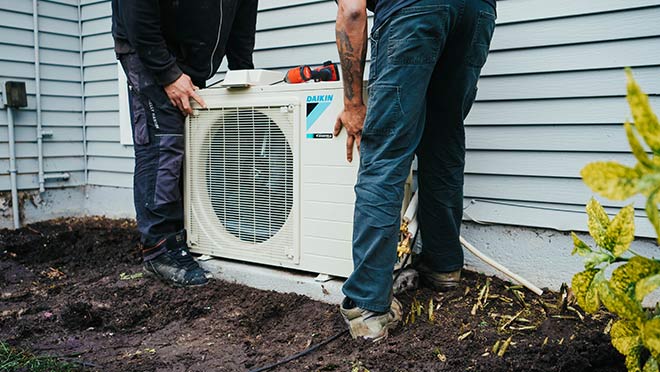5 things to do before it gets cold, dark, and stormy
It's not too early to prepare your home for comfort and savings
The transition from sweltering summer to heating season in B.C. can be gradual or abrupt. So be ready for anything this fall, starting with a look at how prepared your home is for the cold, rain, and wind.
Did you know that home energy bills in the coldest months of the year can be 140% higher – and in some homes, as much as eight or nine times higher – than in the summer? To find out just how much higher your fall and winter bills have been in the past, log in to bchydro.com and compare your seasonal bills on MyHydro.
And if you're a Team Power Smart member, why not start a 10% Reduction Challenge while you're at it? You could earn $50 for reducing your electricity use by at least 10% over 12 months. Not a member? Join for free today.
Here are five things you can do to ensure your home is set up for energy savings, comfort, safety, and savings on your energy bills.
1. Insulate and draftproof: 45% of heat loss is through walls, floors and the roof
If you have the time and budget to take advantage of rebates of up to $1,200 for insulation upgrades, book an appointment with a Home Performance Contractor Network (HPCN) member today. If you don't, or if your home is already well-insulated, ensure that your windows and doors aren't undermining the cause.
Aging or ill-fitting weatherstripping around windows and doors can leave gaps that cause drafts, add to heating (and cooling) costs, and make your home uncomfortable. Fixing those issues with do-it-yourself draftproofing – or installing insulating window film on leaky windows – is inexpensive and easy.
Learn how to draftproof your home.
2. Only heat the rooms you're using, and consider smart thermostats
It's easy to reduce your energy use and home heating bills without sacrificing comfort. Just make it standard practice in your home to only heat the rooms you're using, and turn down the heat when you're away and overnight.
Set the temperature at 18°C while you're in the kitchen or active at home, and at 21°C when you sit down to read or watch TV. It's a general guideline, and if someone needs more warmth, remind them that a hoodie or sweater, or a pair of slippers, will keep them comfy.
If you're in a home equipped with the year-round comfort afforded by a heat pump, stick to the strategy of set it and forget it, which is the go-to for efficiency and comfort.
Consider upgrading to smart or programable thermostats if you don't already have them. A smart thermostat connects to your home's internet and allows you to control your household temperature remotely on your smartphone or laptop. It's convenient, and can help save you money on your electric bill.
3. Check your heating system, and clean or change filters
If you have electric baseboards, wipe down the surface of the heater and vacuum the fins to remove as much dust as possible. If you don't, not only will you smell that dust heating up the first time your baseboards come on in the fall, they'll also be less effective at circulating heat.
If you have a heat pump, clean the filters on your indoor units several times a year and replace them once a year. And clear away clutter around both your indoor and outdoor units, including furniture or curtains indoors, or foliage and snow outdoors.
Check your heating system for visible leaks and loose joints, including space around air registers and grilles, duct connections, floor joists and around the heating unit itself. Clean surfaces and seal any leaks with duct mastic or foil tape. Insulate ducts with vinyl or foil backing facing outward
4. Join Team Power Smart, take a 10% Challenge, sign up for Peak Rewards
If you're not already a member of Team Power Smart, join for free today. Members get energy-saving tips, can enter member-exclusive contests, and can start a 10% Reduction Challenge that can earn them a $50 reward.
And regardless of whether you're a Team Power Smart member, if you have in-home smart thermostats, a networked EV charger, or a load controller, you could be eligible to get $50 for each device you register under the Peak Rewards program.
5. Update your emergency kit and prepare for storms, wildfires and earthquakes
It's been less than two years since a severe winter storm, known as an atmospheric river, caused flooding and extensive damage across many areas of B.C. But as of last year, a BC Hydro survey showed that 64% of British Columbians had not taken any steps to prepare for storm-related power outages.
That survey also found that less than half of B.C. homes have emergency kits, which can be vital year-round, including during wildfire season. Buy or build an emergency preparedness kit that will last at least 72 hours and which includes at least a first aid kit, bottled water, non-perishable food items, a flashlight and batteries, a battery pack for your cell phone, warm clothes and blankets.
Make a contingency plan with your household and ensure that all who live with you understand it. Remind everyone that a downed power line is an emergency, and that they should stay back at least 10 metres and call 9-1-1 immediately if they encounter one.
Get more details on how to be prepared and stay safe during a power outage.
Related:


